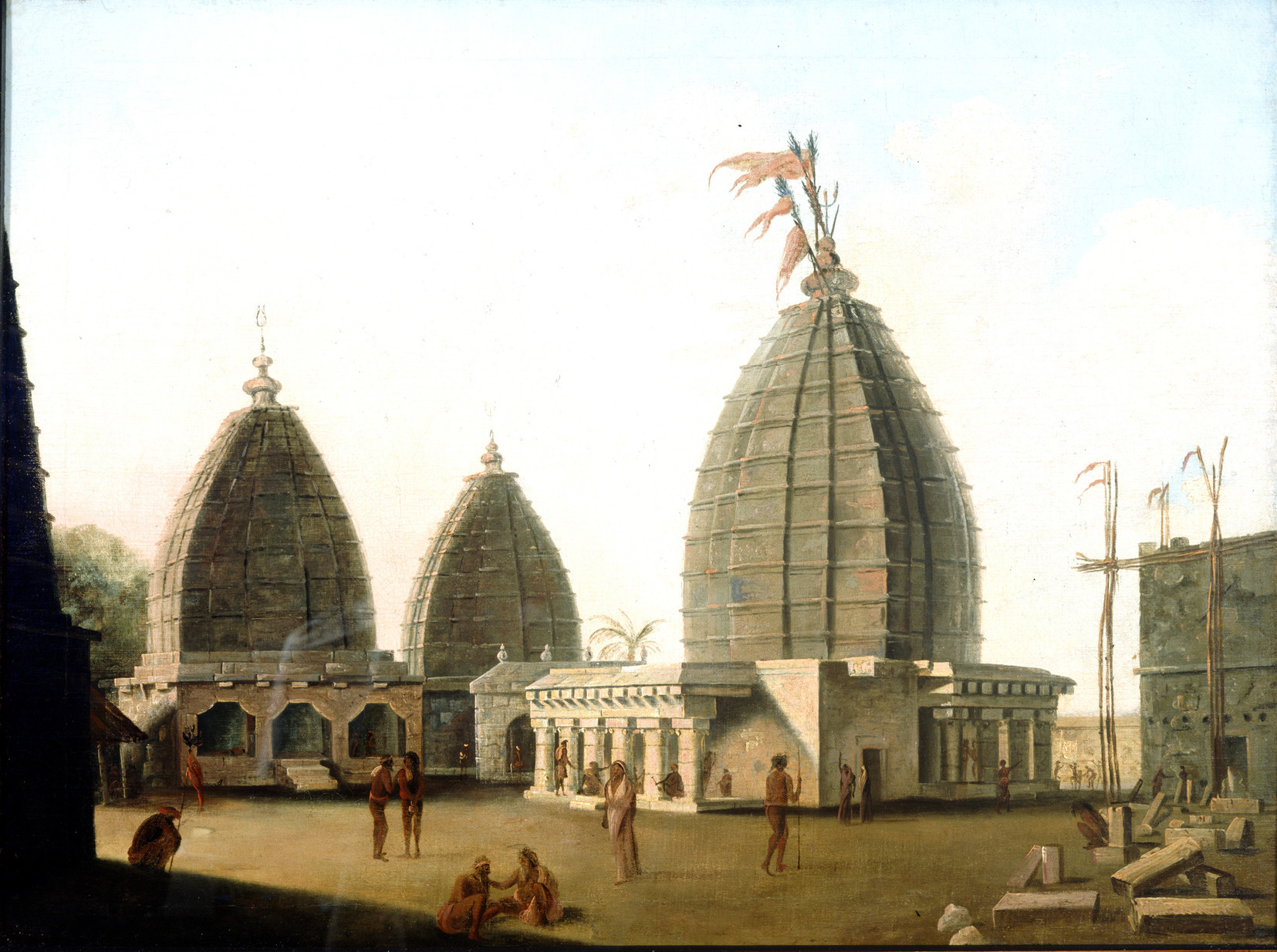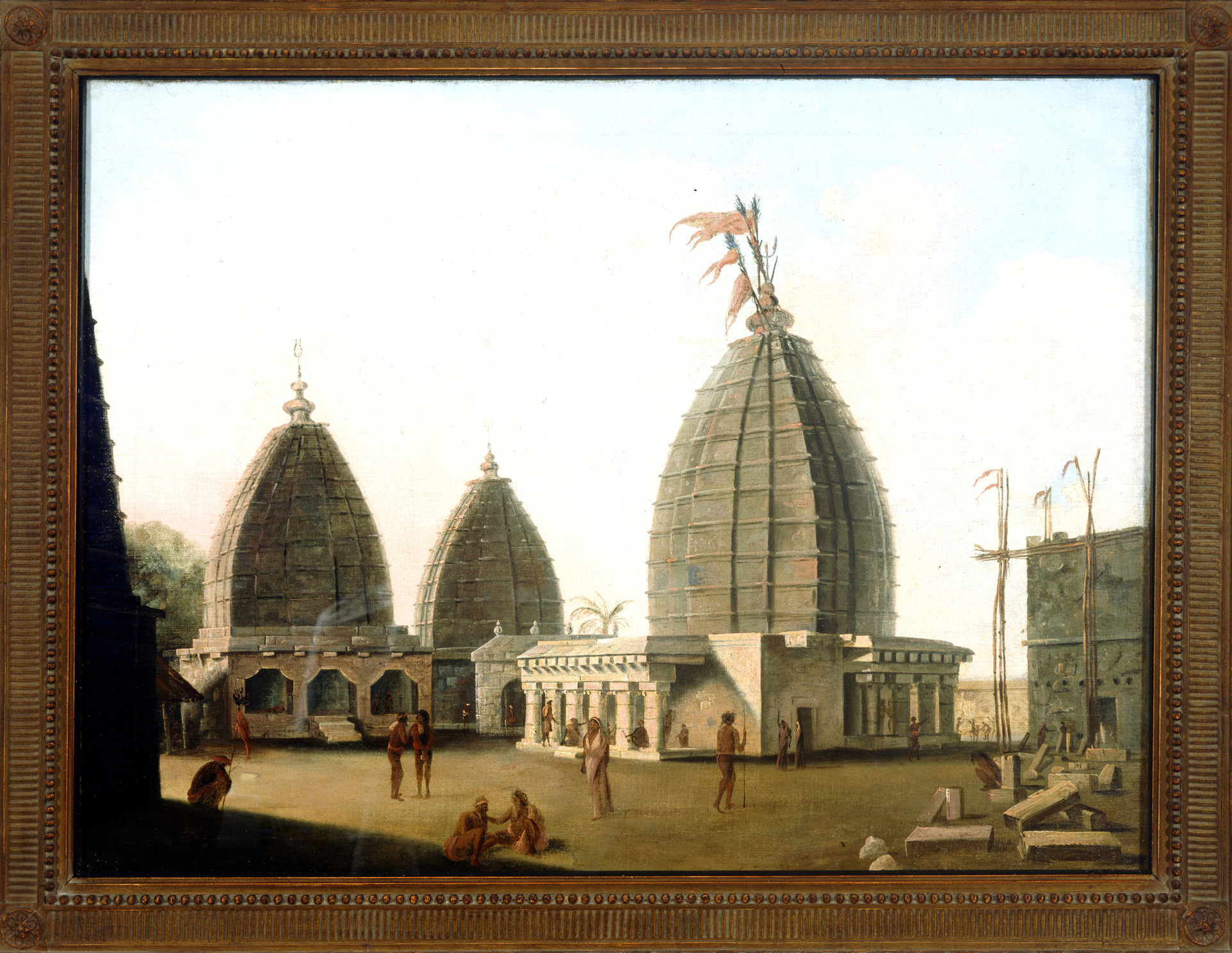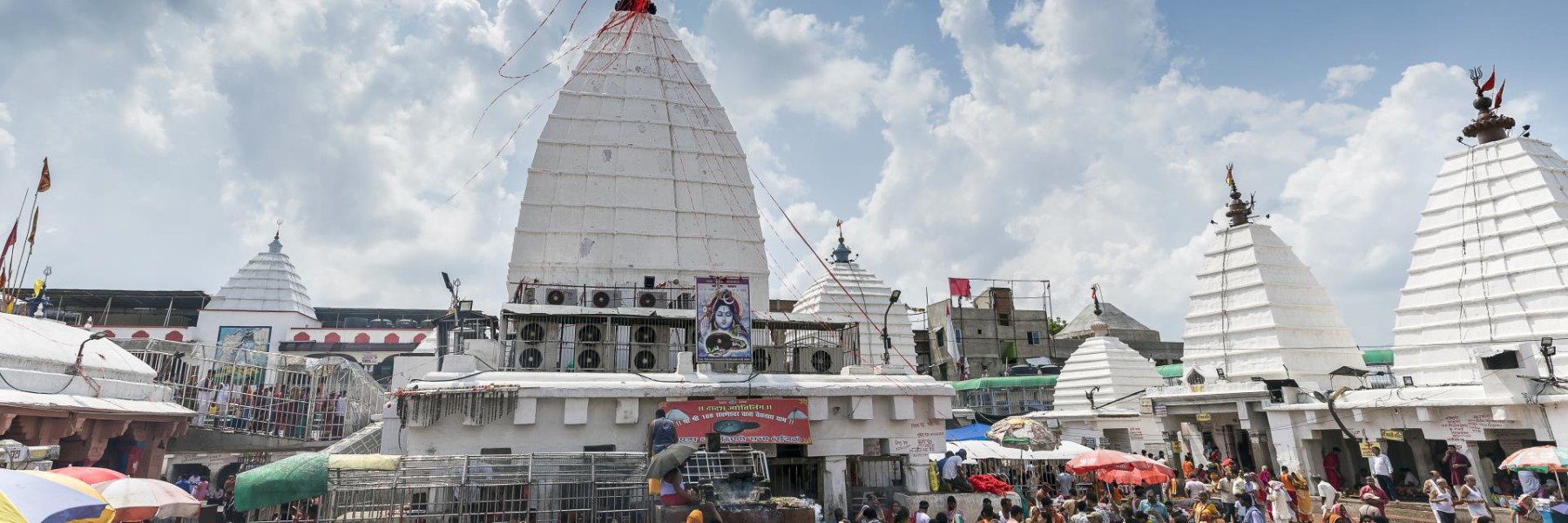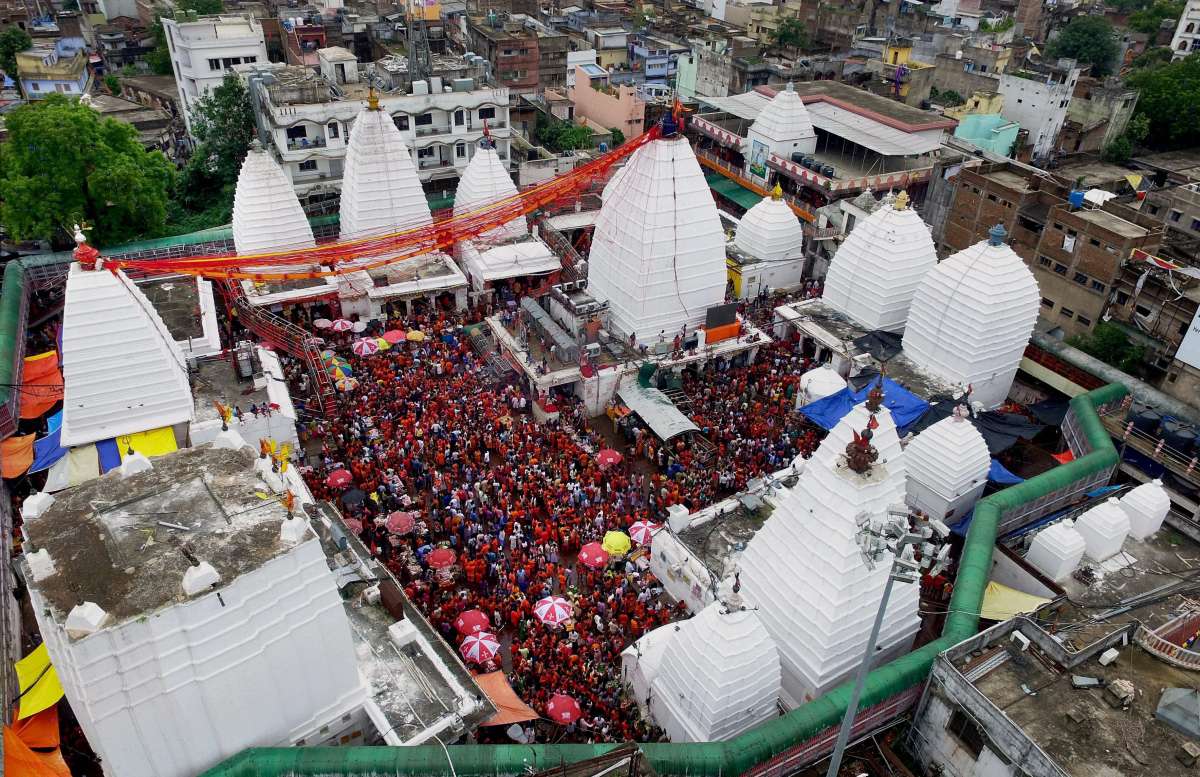
Baidyanath Temple is the fifth jyotirlinga of Lord Shiva in Bharata. It is the only jyotirlinga which represents shiva and shakti together in one linga. This kshetra is revered as one of the shakti peethas.
In the sacred tract of Bharata varsha, we find millions of temples and tirthas which purify the souls visiting them or thinking about them. Tirtha Yatra is an integral part of Sanatana dharma which is recommended to attain liberation and pure devotional service at the feet of Lord Vishnu.
Tirtha Kshetras are dedicated to Lord Vishnu, Lord Shiva or Shakti. Amongst the tirthas of Lord Shiva, Jyotirlingas are prominent. Shakti Peethas find dominance in the religious places dedicated to Shakti. There are twelve jyotirlingas of Lord Shiva which are spread across the Bharata Bhumi.
Jyotirlinga is a place where Lord Shiva appeared as a column of light and the place marks the divine presence of Lord Shiva. These are very powerful kshetras or shiva-lingas which are potent to award any benediction to devotees or the worshippers.
Baidyanath Jyotirlinga is known as the Kaamna Linga meaning it can fulfill the desires of devotees.
The origin of Baidyanath Temple
Once, Ravana performed severe austerity to please Lord Shiva. As the time passed by Ravana went increasing the hardship of his tapasya. When he saw that Lord Shiva was not pleased, he started severing his heads one-by-one and offering them as ahuti in the yajna-kunda. After Ravana had offered his nine heads and was about to severe the tenth one, Lord Shiva appeared and fulfilled his wishes. He then restored the nine heads of Ravana.
Lord Shiva was pleased by the austerities of Ravana and gifted him the jyotirlinga. He also instructed him not to keep the linga on the ground before reaching Lanka or else it would get established in the place it was kept. Ravana was very happy to receive the linga. While he was carefully carrying it to Lanka, Varuna Dev entered his body and Ravana felt like relieving himself.
Lord Vishnu disguised as a boy appeared in front of Ravana. Looking at the boy, Ravana asked him to hold the linga while he relieved himself. But before Ravana could return, Lord Vishnu kept the linga on the ground and it got established there. Ravana became furious at this. He tried lifting the linga. No matter how hard he tried, he was not able to even shake it.
Due to frustration, Ravana pushed the linga inside with his hand and chipped a part of it. Because Lord Shiva restored the nine heads of Ravana, he is gloried as Vaidyanath – the supreme doctor. Since then, the linga is being worshiped as Baidyanath Jyotirlinga. Baidyanath Jyotirlinga was established on the night of Ardra Nakshatra.
In the olden days, Deogar was also known as Ketaki Vana and Hari Vana. Deogar is the apabhramsha of Devgarh meaning the residence of Lord Shiva.
Baidyanath Temple is also a Shakti Peetha
Baidyanath Temple is also revered as a shakti peetha. In fact, it is the only jyotirlinga which marks the presence of shiva and shakti in a single linga. Sati Devi’s heart fell in this place and hence it has been known as Hridayapeetha. It has been a prominent seat of Tantric Sadhana.
Baidyanath Temple was originally constructed by Vishwakarma. The recent temple structure dates from 1596 which has a pure gold kalasha, a pancha shula and chandrakanta mani atop it. The temple is constructed in the shape of a lotus flower. There are many smaller temples surrounding it, dedicated to devis and devatas. Prabhu Sri Ramachandra is said to have been in Baidyanath Dham along with Lakshmana.
The originality of Baidyanath Temple
There are three temples in Bharat named Baidyanath and hence there is contradiction as to which is the original Baidyanath temple. Baijnath temple in the Kangra valley of Himachal Pradesh, Baidyanath Temple in Parli of Maharashtra, and the Baidyanath Temple in Deogar of Jharkhand are the ones which are widely accepted by devotees.
We can deduce the original jyotirlinga not based on antiquity of the architectural structure but on the authority of Acharya. Adi Shankaracharya has glorified this jyotirlinga from the Shiva Purana. As there are two versions of this verse, I have mentioned the variation in the bracket.
purvottare paaralikabhidhaane (prajwaalika nidhaane) sadaashivan tan (sada vasantam) girijaasametam
suraasuraaraadhita paadapadmam sri vaidyanatham satatan namaami
purvottara meaning in the Northeastern direction, in the chita bhumi which is always burning, reside Lord Shiva along with Girija Mata. He is worshiped by the Suras and asuras. I take shelter of the lotus feet of Lord Vaidyanatha.
In the Dwadasha Jyotirlinga dhyana mantra, Adi Shankaracharya mentions that Baidyanatha is situated in Parli which has brought in contradiction with Parli Vaidyanath in Maharashtra as the village is named Parli. However, the older name of Deogar was Parli.
Residents and priests of Maharashtra consider Parli to be the original jyotirlinga, but their consideration assumes that Parli is situated in the north-eastern direction of Beed District. The sloka does not specify any predefined note that the sloka is in consideration of Beed. Hence it is understood that it is the northeastern direction of Bharata Varsha.
Dwarka Peethadipati and Puri Peethapadi, the honorable Shankaracharyas authorized Deogar to be the original Jyotirlinga after this confusion arose. In spite of this evidence, if you are not convinced, it is better you visit all the three temples so that you have sense of completion of the Jyotirlinga Yatra.
Temple Timings of Baidyanath Temple
The Baidyanath temples opens for darshan at 4 am. Until 5:30 am, the shodashopachara or the worship with the sixteen articles is performed inside the garbhalaya. The temple closes at 3:30 pm and then opens at 6 pm. The temple closes by 9 pm in the night.
Temple is crowded on Mahashivaratri day and during the shravana masa when Kavadias travel to the temple to offer Ganga Water and receive the blessings of Lord Vaidyanath.
How to reach Baidyanath Temple
Baidyanath Temple is in the Deogar district of Jharkhand. The easiest way to reach the temple and enjoy your darshan is to travel with Tirtha Yatra on the Ayodhya Kashi Yatra. You need not worry about the arrangements like food, stay and darshan. Everything is perfectly taken care of, while you focus only on Lord Baidyanath.
If you wish to visit the temple on your own, you may opt the following methods.
By Air – Deogar Airport is the nearest Airport to Baidyanath Temple. As the airport is new, it has got limited connectivity with the other major airports in Bharat. From Deogar Airport, taxis are available to Baidyanath Dham. Patna and Ranchi airports are the next options.
By Rail – Baba Baidyanath Dham is the nearest Railway Station to reach this temple. You may also reach Jasidih Junction Railway Station which is connected with the major cities in Bharat. From the railway station, taxis or autos can be hired till the temple.
By Road – Baba Baidyanath Dham is well connected by the Roadways and the State Transport Buses. From the nearest districts like Patna and Ranchi, frequent buses are available to Deogar. From Deogar bus stand, you may take shared autos or private taxis to reach the temple.
3













3 Comments On Baidyanath Temple, Deogarh
Sunil
Excellent description with full-length details. Thanks
GANAPATHI Subbhramanian
Baithenath temple Tirtha Yatra covered any Yatra
Wonderful writeup and useful information about the holy Dham